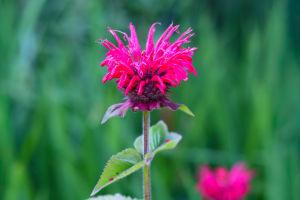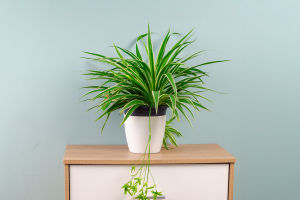Succulents have become the darlings of the plant world, thriving in homes, offices, and gardens everywhere. What's the secret behind their widespread popularity?
These low-maintenance plants seem to be everywhere, from Instagram feeds to local garden centers. But what exactly makes succulents so appealing? Let's take a closer look.
Low Maintenance, High Reward
One of the main reasons succulents have become such a hit is their low maintenance needs. Unlike many other houseplants that require regular watering and special care, succulents thrive with minimal attention. Their ability to store water in their thick, fleshy leaves means they can go longer without being watered, making them ideal for people with busy lives or those who might not have the greenest of thumbs.
Moreover, succulents are well-suited for a wide variety of climates, and their hardiness allows them to survive in conditions that might spell disaster for other plants. For example, some can withstand dry spells, direct sunlight, and even neglect, making them perfect for beginners or anyone who's a bit forgetful when it comes to watering.
Endless Variety and Visual Appeal
Another factor that contributes to succulents' popularity is the incredible diversity of species available. From the well-known jade plant to the quirky, spiky appearance of the aloe vera, succulents come in an array of colors, sizes, and shapes. This variety allows plant lovers to choose the perfect succulent for their space, whether they're looking for something small to brighten up a desk or a bold centerpiece for a garden.
Their unique look is also a big draw. Many succulents feature a stunning array of colors, from deep greens to purples, reds, and even blues. Their geometric shapes and intricate patterns create a sense of harmony in any setting, and their sculptural forms make them a favorite among interior designers.
Perfect for Small Spaces
In our fast-paced, urbanized world, many people live in smaller spaces with limited room for traditional gardens. Succulents are the perfect solution for those who want to add some greenery to their living spaces without taking up too much room. Their compact size makes them ideal for apartments, balconies, or even small desks.
Whether placed on a windowsill or arranged in stylish containers, succulents can brighten up even the smallest corners. Additionally, the variety of potting options, from classic ceramic planters to quirky geometric designs, means that succulents can be seamlessly incorporated into any décor.
Health Benefits and Stress Relief
Aside from their aesthetic appeal, succulents have been shown to have a positive impact on mental health. Studies have shown that interacting with plants can reduce stress, boost mood, and improve focus. Having a few succulents around your workspace or home can bring a sense of calm and tranquility, promoting well-being and relaxation.
According to Dr. Melinda Knuth, plants have been shown to reduce stress and anxiety, boost creativity, and even lower cortisol levels — confirming that adding a few houseplants to your home or workspace can genuinely support mental well‑being.
The simple act of caring for a plant can also create a sense of purpose and satisfaction. Watching a succulent grow and thrive under your care provides a small but meaningful accomplishment, which can be incredibly rewarding. The act of tending to plants is meditative for many people, helping them unwind after a busy day.
Affordable and Accessible
Succulents are also relatively affordable, especially considering the joy they bring. Most succulents are inexpensive to purchase, and they often require less upkeep and fewer resources than other plants, making them cost-effective in the long run. Whether you're buying a single succulent or creating a whole collection, it's easy to find one that fits your budget.
They are also widely available, found in garden centers, nurseries, and even large retailers. You can even find them at farmers' markets or order them online, which makes them easily accessible to people no matter where they live.
Environmental Benefits
Succulents are also great for the environment. Their ability to thrive with minimal water makes them an excellent choice for sustainable gardening, especially in areas facing water shortages or where resources are limited. Unlike high-maintenance plants that need regular irrigation, succulents' water-conserving traits make them eco-friendly options for urban gardeners.
Succulents can also help improve indoor air quality. Like all plants, they absorb carbon dioxide and release oxygen, but some types of succulents, such as aloe vera and snake plants, are particularly good at purifying the air. Having these plants in your home can contribute to a cleaner, fresher environment.
The Joy of Collecting Succulents
Succulents are not only easy to care for but also highly collectible. Many people enjoy curating their own succulent garden, expanding their collection as they discover new varieties. Whether you're on the hunt for rare species or you're simply drawn to the wide array of shapes and colors, succulent collecting has become a popular hobby that brings people together.
This joy of collecting is amplified by the sense of accomplishment that comes with growing a thriving collection. Sharing your plants with others, exchanging tips, or trading cuttings with fellow enthusiasts only adds to the community aspect of succulent gardening.
Conclusion
Succulents have captured the hearts of plant lovers for a reason. Their low-maintenance nature, beautiful variety, and the numerous health and environmental benefits they offer make them an excellent choice for anyone looking to add some greenery to their lives. Whether you're a beginner or a seasoned plant enthusiast, succulents bring beauty, tranquility, and a touch of nature into even the busiest of lifestyles.
If you're looking for a plant that's easy to care for, looks fantastic, and provides numerous benefits, it's hard to go wrong with a succulent. So go ahead, add a little green to your space—you'll be glad you did!


